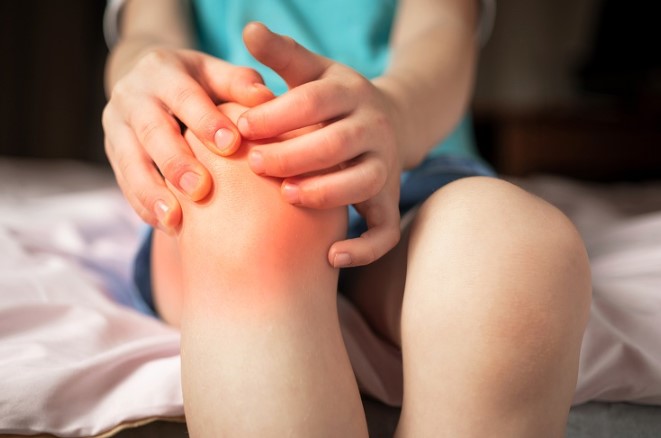Introduction to Juvenile Arthritis
What is Juvenile Arthritis?
Juvenile arthritis, also known as pediatric rheumatic disease, refers to the various types of arthritis that affect children under the age of 16. Unlike adult arthritis, which is primarily due to wear and tear, juvenile arthritis is an autoimmune condition where the body’s immune system mistakenly attacks its own cells and tissues.
Prevalence and Importance of Awareness
Juvenile arthritis affects about 1 in 1,000 children in the United States. Raising awareness is crucial for early diagnosis and treatment, which can significantly improve the quality of life for affected children.
Types of Juvenile Arthritis
Systemic Juvenile Idiopathic Arthritis (SJIA)
This type affects the entire body, causing high fevers, rash, and inflammation of internal organs, in addition to joint inflammation.
Oligoarticular Juvenile Idiopathic Arthritis
This type affects four or fewer joints in the first six months. It’s the most common form of juvenile arthritis and often affects the larger joints, like knees and elbows.
Polyarticular Juvenile Idiopathic Arthritis
Affecting five or more joints within the first six months, this type can impact both large and small joints and may have symptoms similar to adult rheumatoid arthritis.
Juvenile Psoriatic Arthritis
This type combines arthritis with psoriasis, a skin condition characterized by red, scaly patches. It often affects the fingers and toes.
Enthesitis-related Arthritis
This form involves inflammation where the tendons attach to the bone. It commonly affects the spine and lower limbs.
Undifferentiated Arthritis
This category includes arthritis that doesn’t fit into any of the other types but still presents significant symptoms.
Symptoms and Signs of Juvenile Arthritis
Common Symptoms
Children with juvenile arthritis may experience persistent joint pain, swelling, and stiffness. These symptoms are often worse in the morning or after periods of inactivity.
Age-specific Symptoms
Young children might have difficulty with motor skills or show signs of limping. Teenagers might experience more joint pain and swelling during growth spurts.
Causes and Risk Factors
Genetic Factors
Certain genetic markers can increase the risk of developing juvenile arthritis. A family history of arthritis or other autoimmune diseases can be a significant factor.
Environmental Factors
Exposure to certain infections or environmental factors can trigger the onset of juvenile arthritis in genetically predisposed children.
Autoimmune Mechanisms
In juvenile arthritis, the immune system attacks healthy joint tissues, leading to inflammation and pain. The exact cause of this autoimmune response is still under research.
Diagnosing Juvenile Arthritis
Clinical Examination
A thorough physical examination by a pediatric rheumatologist is essential for diagnosing juvenile arthritis. They will look for signs of joint inflammation, limited range of motion, and other symptoms.
Laboratory Tests
Blood tests can help identify markers of inflammation and autoimmune activity, such as elevated erythrocyte sedimentation rate (ESR) and the presence of antinuclear antibodies (ANA).
Imaging Studies
X-rays, MRI, and ultrasound can help assess joint damage and inflammation, providing a clearer picture of the disease’s progression.
Treatment Options for Juvenile Arthritis
Medication
- Nonsteroidal Anti-inflammatory Drugs (NSAIDs): These are often the first line of treatment to reduce pain and inflammation.
- Disease-Modifying Antirheumatic Drugs (DMARDs): These drugs can slow the progression of arthritis and prevent joint damage.
- Biologic Agents: These are newer treatments that target specific parts of the immune system to control inflammation.
Physical Therapy
Regular physical therapy can help maintain joint function and muscle strength. Tailored exercises can improve flexibility and reduce pain.
Lifestyle Changes
Incorporating a balanced diet, regular exercise, and adequate rest can help manage symptoms. Avoiding activities that strain the joints is also important.
Surgical Interventions
In severe cases, surgical options such as joint replacement or synovectomy (removal of the joint lining) may be considered.
Managing Daily Life with Juvenile Arthritis
Coping Strategies for Children
Teaching children self-management skills, such as using hot and cold packs and practicing relaxation techniques, can empower them to manage their symptoms.
Support for Parents and Caregivers
Parents and caregivers need support to help their children manage the disease. Joining support groups and seeking counseling can be beneficial.
School and Social Life Adaptations
Creating an inclusive environment at school and in social settings can help children with juvenile arthritis feel more comfortable and engaged.
Diet and Nutrition
Anti-inflammatory Foods
Incorporating foods rich in omega-3 fatty acids, antioxidants, and fiber can help reduce inflammation. Examples include fatty fish, berries, and leafy greens.
Supplements
Vitamin D and calcium supplements can support bone health, which is crucial for children with arthritis.
Foods to Avoid
Limiting processed foods, sugary snacks, and foods high in saturated fats can help manage inflammation and overall health.
Physical Activity and Juvenile Arthritis
Importance of Exercise
Regular physical activity helps maintain joint function, build muscle strength, and improve overall health.
Recommended Activities
Low-impact exercises such as swimming, cycling, and yoga are excellent choices for children with arthritis.
Activities to Avoid
High-impact activities that can strain the joints, such as running and contact sports, should be avoided.
Emotional and Mental Health
Psychological Impact on Children
Living with a chronic condition can be emotionally challenging. It’s important to address feelings of frustration, anxiety, and depression.
Support Systems and Counseling
Access to psychological support and counseling can help children and their families cope with the emotional aspects of juvenile arthritis.
Alternative Therapies
Acupuncture
Some children find relief from pain and inflammation through acupuncture, which involves inserting thin needles into specific points on the body.
Herbal Remedies
Certain herbal supplements, such as turmeric and ginger, have anti-inflammatory properties and can complement traditional treatments.
Massage Therapy
Massage can help reduce muscle tension and improve circulation, providing relief from arthritis symptoms.
Future Research and Advances
Ongoing Studies
Research is ongoing to better understand the causes of juvenile arthritis and to develop more effective treatments.
Potential Breakthroughs
Advances in genetic research and immunotherapy hold promise for new treatments that can more precisely target the underlying causes of juvenile arthritis.
Common Myths and Misconceptions
Debunking Myths
There are many misconceptions about juvenile arthritis, such as the belief that children will outgrow it or that it is caused by injury. Education is key to dispelling these myths.
Educating the Public
Raising awareness about the realities of juvenile arthritis can help foster understanding and support for affected children and their families.
Conclusion
Juvenile arthritis is a challenging condition, but with the right knowledge and support, children with this diagnosis can lead fulfilling lives. Early diagnosis, comprehensive treatment, and a supportive environment are crucial for managing the symptoms and improving quality of life.
FAQs
1. Can juvenile arthritis be cured?
Currently, there is no cure for juvenile arthritis, but with proper treatment, many children can achieve remission and lead active lives.
2. Is juvenile arthritis the same as adult arthritis?
No, juvenile arthritis is an autoimmune condition that specifically affects children, while adult arthritis often results from wear and tear on the joints.
3. How is juvenile arthritis diagnosed?
Diagnosis typically involves a combination of physical examinations, blood tests, and imaging studies to assess joint inflammation and damage.
4. What can parents do to support a child with juvenile arthritis?
Parents can support their child by staying informed about the condition, advocating for their needs, and providing emotional and practical support.
5. Are there any lifestyle changes that can help manage juvenile arthritis?
Yes, maintaining a healthy diet, staying active with low-impact exercises, and ensuring adequate rest can help manage the symptoms of juvenile arthritis.

